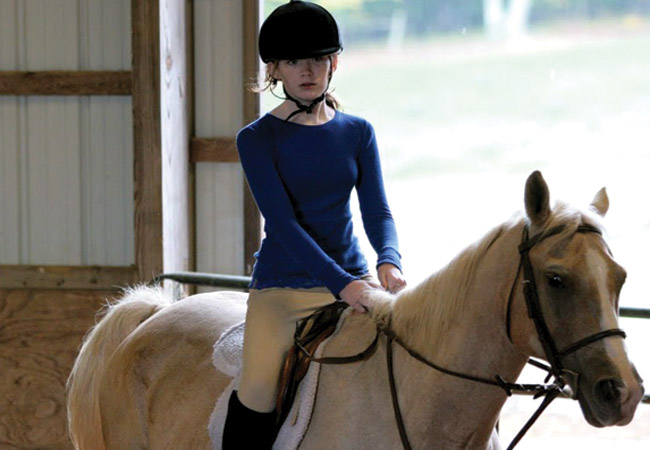
On a typical Saturday at Tamarack Stables in Lorton, children and their parents can be seen milling around in unusual company—ponies. Unlike your average athlete, these kids—ranging from toddlers on ponies the size of a dog to teenagers on horses that weigh as much as a car—commit their time to honing the skills necessary to work with a horse.
Senior Colleen Salpini began horseback riding at eight years old when her sister started participating in the sport. She goes riding three to five days a week during the school year. After high school, Salpini plans on riding on a college Intercollegiate Horse Show Association team at whichever university she decides to attend.
“[Horseback riding] can be very challenging to fit in during the school year, especially when I also having marching band and when I’m working on college apps,” Salpini said. “I use all of my free time to do work, so I am still able to go to bed by 9:30.”
Modern equestrianism is divided into the two broad disciplines of English and Western riding. If you’ve ever seen a picture of a cowboy, you’re probably familiar with Western riding; this discipline has its roots in cow roping and other similar professions. English riding is more traditional and is typically associated with activities like fox hunting and show jumping, where riders attempt to ride their horses over a series of jumps as quickly as possible. The various sub-disciplines that English and Western riding are comprised of embody the versatility of horseback riding and help to explain its universal appeal.
“My favorite part about horseback riding is competing at horse shows and jumping large fences,” Salpini said. “Competitions are really fun because I get to spend the whole day hanging out with my friends and competing in different divisions. I enjoy the challenge of showing and the ribbons are great too.”
Despite all that horseback riding has to offer as a sport, it has yet to enter into mainstream popularity among kids and teenagers. The main obstacle for many who aspire to ride is simple: the expense. Horses require extensive vet care, feed and boarding costs. With all the expenses associated with horses, riding can become costly very quickly. Luckily, many stables that offer lessons will also provide horses for students to use during periods of instruction, which allows students to avoid paying for their own horse.
“I no longer own my own horse, but I ride a variety of my trainer’s horses and ponies,” Salpini said.
With all of the flexibility and options that equestrianism offers as a sport, it’s no wonder that places like Tamarack are gaining in popularity among the next generation of young athletes. Horseback riding has proven to be a fun and unique way for people of all ages and skill levels to challenge themselves both mentally and physically, garnering the approval of kids and parents alike.
“I think riding is a great sport, and I think more people from this area should get involved in it,” Salpini said.
By Olivia Buckley
Special to The A-Blast








